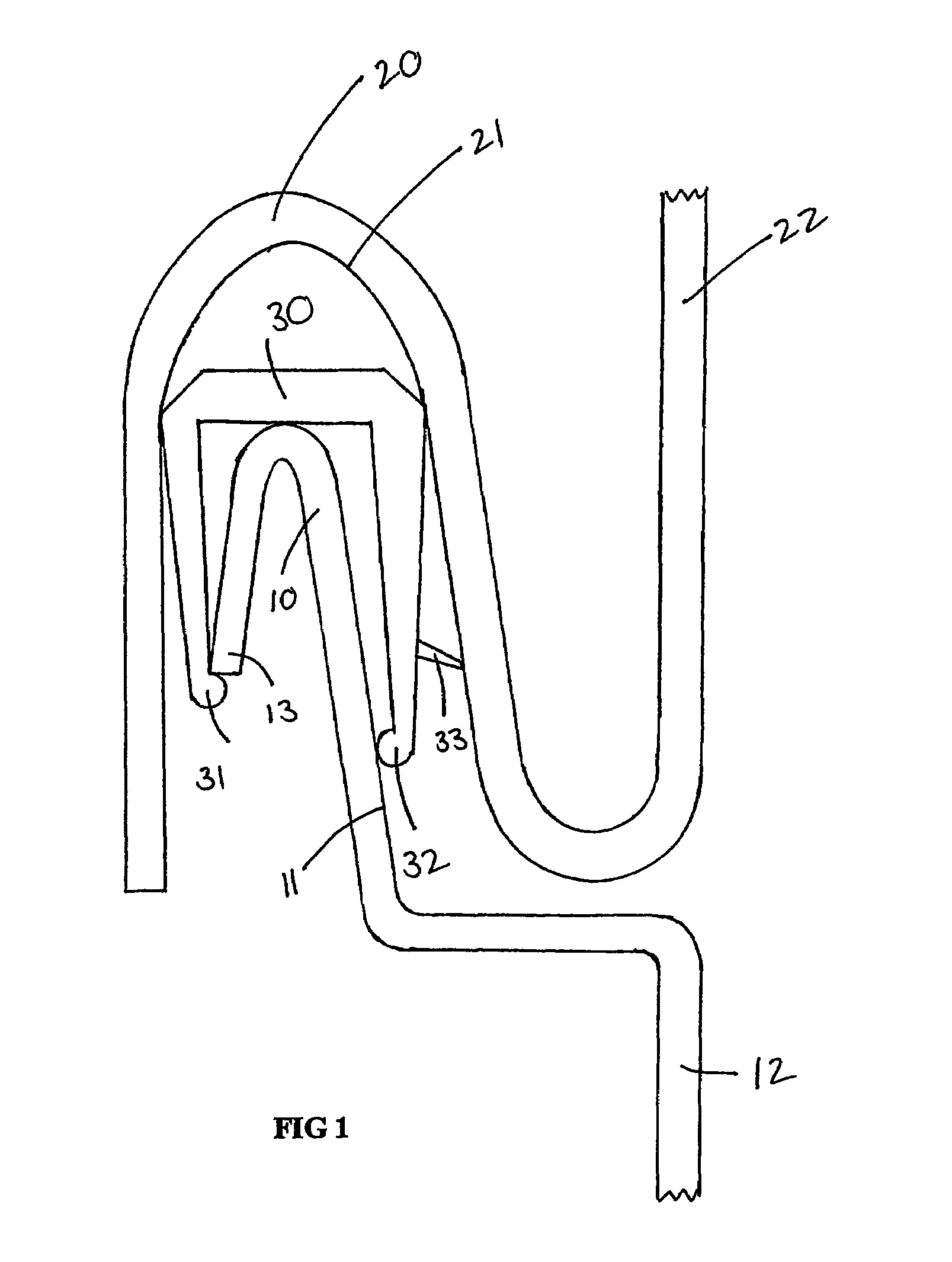Panel edge joint
a panel and edge joint technology, applied in the direction of vehicle/pulley ropes, building components, refrigeration devices, etc., can solve the problems of reducing the efficiency of the refrigeration unit, affecting the efficiency of the system, and heat loss being the major source of reducing efficiency, so as to achieve a deeper and tighter fit
- Summary
- Abstract
- Description
- Claims
- Application Information
AI Technical Summary
Benefits of technology
Problems solved by technology
Method used
Image
Examples
Embodiment Construction
[0033]FIG. 1 shows a panel edge joint formed on opposing edges of a first panel 12 and second panel 22, said panels forming the boundary of a refrigeration unit cool room. The panel edge joint comprises a male part 10 extending along at least one edge of the first panel 12 and a corresponding female part 20 extending along at least one edge of a second panel 22. The male part 10 and the female part 20 sandwiching a deformable sleeve 30 therebetween.
[0034]The female part 20 has an inner contour 21 which corresponds with the outer contour of the male part. The dimensions of the parts allows for a loose fit of the parts with space between the outer male contour and inner female contour to accommodate the thickness of the deformable sleeve.
[0035]The deformable sleeve 30 is formed to have geometry such that the sleeve fits between the male and female parts to provide a tight fit. Preferably the geometry of the deformable sleeve 30 is slightly rectangular in comparison to the curvilinear ...
PUM
 Login to View More
Login to View More Abstract
Description
Claims
Application Information
 Login to View More
Login to View More - R&D
- Intellectual Property
- Life Sciences
- Materials
- Tech Scout
- Unparalleled Data Quality
- Higher Quality Content
- 60% Fewer Hallucinations
Browse by: Latest US Patents, China's latest patents, Technical Efficacy Thesaurus, Application Domain, Technology Topic, Popular Technical Reports.
© 2025 PatSnap. All rights reserved.Legal|Privacy policy|Modern Slavery Act Transparency Statement|Sitemap|About US| Contact US: help@patsnap.com



